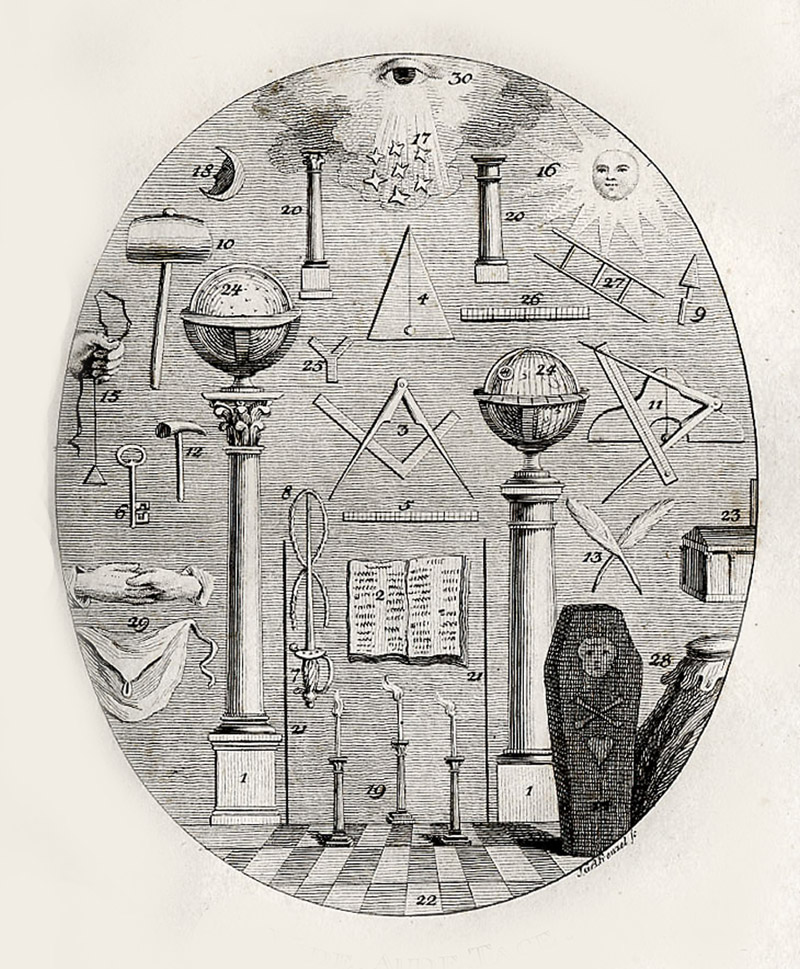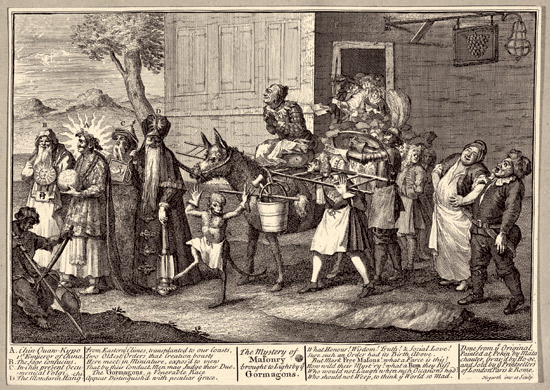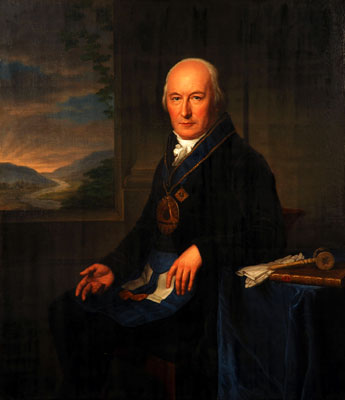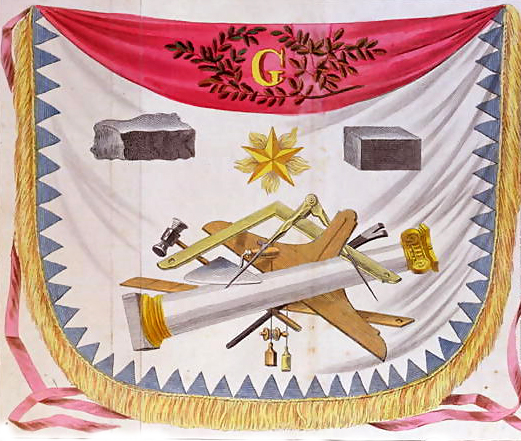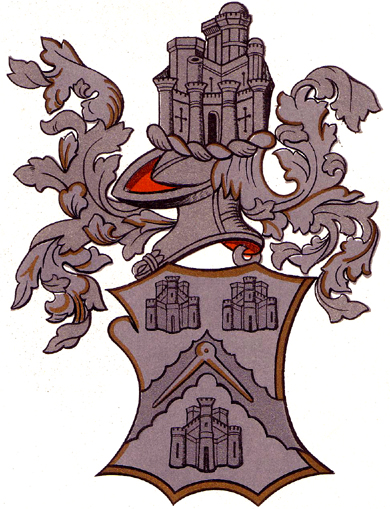The Three Reformers of Craft FreemasonryFrank C. Higgins in his Book “The Beginning of Masonry” published in 1916, states that: “Our own craft has hardly departed from the use of ancient monitors and lectures connecting Masonry with the beginnings of the human race: Adam, Seth, Enoch, Noah, Moses and other patriarchs - which had become a laughing stock among our strenuous modernists, when it begins to transpire that the structure of Freemasonry is superior to her traditions, and that he who knows Freemasonry structurally will have no difficulty whatever in comprehending all these curious connections as apt and purposeful.
When this knowledge becomes more common to the fraternity we shall be in a position to understand the difference between that which guarantees the genuineness of our own antiquity and the claims that any mystical brotherhood may at present set up, of surpassing age, royal descent and the possession of the fundamental arcane of the universe, without the average Mason's being able to prove that his pretensions have any greater value than those of the newcomer.”
The First Reformer of the Craft
RW Brother James Anderson
ca. 1680-1739Our RW Brother James Anderson was crucial in perming the first Reform of Craft Freemasonry, by reforming the Ancient and Honourable Fraternity of Free and Accepted Mason from an operative society into a speculative society of Freemasons. Our RW Brother James Anderson was the author of the first and second editions of “The Constitutions of the Free-Masons”, a work commissioned by the Grand Lodge of London on the 29th September 1721 where Brother Anderson was officially directed to "digest the old Gothic Constitutions in a new and better method." And also wrote the “Charges of a Freemason.”
Both this works greatly assisted in providing the guidelines on history, antiquity and importance of the Craft.
Our RW Brother James Anderson was also instrumental in the recording of the early history of the Grand Lodge London founded in 1717 from recollection from members who attended this proceedings of the Grand Lodge of London as our Bro. James Anderson was not yet initiated into the Craft Himself which happened a few years later.
The only period portrait of Anderson is found in William Hogarth's "The Mystery of Masonry brought to light by ye Gormagons", Brother James Anderson is portrayed with his head in the ladder.
Bro James Anderson as the Grand Secretary of the Grand Lodge of London he was in that position a key member in the process of Changing the name from Grand Lodge of London to Grand Lodge of England during the year of 1724.James Anderson among other important contributions which he gave to the Craft was laying down in writing the position of Freemasons in Freemasonry in regards to organized religion, because of all this his work which we in its day helped the Craft to establish it self as a solid Society, we still today are honoured and grateful for his fundamental work which enable this our Grand Society of the Royal Art to survive and having given us the tools to understand that particular period of the Craft by the legacy of his masonic work and writings. In this sense the RW Brother James Anderson is regarded by the Masonic High Council the Mother High Council of the World as the first reformer of the Craft.
The Masonic published works of our RW Bro. James Anderson where:
The Constitutions of the Free-Masons – 1723
Charges of a Freemason - 1723
A Defence of Masonry – 1738 (?)The Second Reformer of the Craft
MW Brother Friedrich Ludwig Schroder
1744–1816The reformation work of the Craft by our RW Brother Schroder, started by the aim of achieving two goals by request of the Brethren of Hamburg:
1 – Restore the true ancient Craft Freemasonry workings and which existed in Hamburg up to 1765.
2 – To work for the betterment and improvement of the Harmony of the Brethren and to permit that the Worshipful Masters be elected in the Festivity of Saint John.
What soon started as a two point mission ended up in a quest to reform the Craft and bring into practice all the original English Craft working Ceremonies which where in practice from 1745 to 1765.
The RW Brother Eugen Lennhoff wrote with regard to the reforming work of Friedrich Ludwig Schroder:
"... All those superfluities which, in the course of time, had been added to the simple symbolism of English ritual, with all its beauty, were cast out by Schroder...''
In September 1932 Bro. W. Harvey McNairn from Canada wrote about Frederich Ludwig Schroeder: He was one of Germany's greatest actors and an ardent Freemason, brought his influence to bear upon German Freemasonry.
Dissatisfied then (as thousands of devoted Freemasons are dissatisfied today when any one attempts to "improve" upon ritual or doctrine) Schroeder, as Master of Lodge Emanuel at Hamburg, resolved to attempt to complete reformation of Masonry in Germany; to rid it of all its corruptions, "advanced" degrees, spurious Rites and fantastic "side orders".
His theory was that, despite the traditions of the Steinmetzen, Freemasonry had begun in Gothic England and spread to the continent.
According to his belief, the English Book of Constitutions and the English Ritual held the only pure Craft Freemasonry. Securing a copy of "Jachin and Boaz," Shroeder translated it and made it the foundation of that which speedily became known as Shroeder's Rite or Shroeder's System. It was adopted by the Provincial Grand Lodge in 1801 and, later, by many other German Lodges.
The Hamburg Grand Lodge, under which Lodge Amalia now holds, still works according to this system. (How the "Gentlemen belonging to the Jerusalem lodge" who wrote the pamphlet, would have turned in his grave had he known how his famous expose was to be used!)
Otto Caspari, historian, Goethe admirer and Masonic enthusiast, couples Goethe and Schroeder in the change of the working of Lodge Amalia. He says:
"Frederich Ludwig Schroeder was the man who, meantime, made his appearance as the reformer of Freemasonry. He also went to Weimar and succeeded in persuading Goethe and the Duke Carl Augustus to take an interest in his system. Amalia Lodge accepted Schroeder's system and in 1808 opened its Temple again."
"Jachin and Boaz" may be found in any good Masonic Library. The modern Freemason will miss much that he knows in its pages, and find much that he does not know as Masonry; but he will see that many essential Masonic principles are therein set forth.
Goethe remained a member of Amalia Lodge to the day of his death. What was to him the "new system" must have made a far greater appeal than the Rite of Strict Observance. Shortened, abbreviated, scanty as is the Masonry set forth in "Jachin and Boaz," to us who are heir of the rich ritual and symbolism of Preston, Oliver, Desaugliers et al; it is yet Masonic, which the Strict Observance can hardly be considered to be in the light by which we moderns see. At any rate, Goethe embraced the Schroeder system as the real and Ancient Freemasonry, and it was this which influenced both his life and his writings.
MW Brother Friedrich Ludwig Schröder, 1744-1816
Schröder writes:
“To end with the symbols is to end with Craft Freemasonry.... he who looks to the hieroglyphs with farce, has first to convince us not in uncertain terms.
My dear Brethren, consider first, the lessons taken from the virtuous life of wise men, of stability, of prudence and of stealth which where to us taught in de Entered Apprentice Degree.
Think on this great percepts and in the subsequent models! Are all this based in farce?
Even if the old costumes have no more than the value of the old practices of the Guilds of Stone Mason, even if the interpretation of these percepts is completely useless it is the are sufficient, they are the material base from which the current of the Fraternity is formed and whence we do not allow major changes, while we remain with the English system, for all this time, our meetings are completely free from the intermission of the wild speculative dreamers.”The Sources where Schröder researched the Original English Craft Workings
The problem here arises in respect to Ritual Authenticity for the simple fact that the Grand Lodge of England had never issued an official Ritual, thus creating confusing and uncertainty and more even allowing to others to invent and bring into the Craft many innovations. And it is exactly this what latter happens with the so called “Grand Lodge of the Antients” by which a group of Scottish and Irish Lodges badly informed on the correct Tradition of the Original English Craft, have decided to impose what they alone considered a better and more accurate.
Schroeder considered the English Book of Constitutions and the Old English Rite, as the both unique sources of the end and of the essence of Craft Freemasonry. He informed the Lodges under his Jurisdiction and many other Lodges about this point in 1801, he induced these Lodges to adopt the Old English Ritual. This Ritual in the mean time was modified in essence to reduce all possible discrepancies with others from other Lodges.
Concerning the correct position of the J and B Columns in Lodge Brother Schröder writes:
“Well if in all Old English Lodges, even in those working such in the version of Prichard, the Entered Apprentice receives his salary in the J Column and the Fellow-craft in the B Column...”
Schröder, has a well balanced man, he dis not follow his friends until this point: he remembered Bode that in the Old Lodges there where no Altars but pure and simply a small table to place the Book of the Sacred Law . Anyhow Schroeder decided to use the "Three Distinct Knocks" has the basic material of his work. He had a large number of printed Rituals and Catechisms of English, French and German origin at his disposal, because all the European Continental Lodges worked with printed Rituals and even today they still work in this manner.
Those who would like to make a study more meticulous must have as reference a copy of the Ritual of Schroeder of the year 1816. The ideas of Schroeder became obvious by the detailed reading of his own text. The citations of the edition of 1815 of his work "Materialien zur Geschichte der Freimaurerei (Material for the History of Free Masonry), which we give hereby an excerpt:
“I hope that the complete Ritual will explain better my own opinion, than those of the fragments of the first paragraphs. We cannot forget that I by no means consider that this Ritual ("Three Distinct Knocks") is the original.
Maybe it has developed gradually to a certain perfection, has it had to have suffered changed, at least when the Protestant Church had become predominant.
The United Lodges (this is those in Hamburg and those in Berlin) they already know this Ritual from a collection of texts, but the observations in them serve only to show the difference between the old and the new Freemasonry and I could not lift the entire veil. Therefore I now present to my readers a conscientious translation, so that a convenient exam can be done.
The small book opened my eyes and makes my affirmations highly probable, it is called: "Three Distinct Knocks at the Door of the most Ancient Freemasonry".
Schroeder now makes a few preliminary observations over the text of the "Three Distinct Knocks" which is partially in line with the original, but it has a few additions to it which are immediately recognized such as the following ones: He gives the Column B to the Senior Warden and the column J to the Junior Warden.
In relation to the Old Obligation Schroeder agrees with the suggestion of Herder, that the Obligation should not be given in the night of Initiation but should be read together with the Degrees Catechism to the candidate in the following working Lodge of Instruction meeting.
Before he said anything he had to be instructed. It seems that he had been kneeling until then. Several reasons take me to doubt that in that original arrangement, no word was said concerning the Temple of Salomon. How come that in this Ritual and in the Catechism of Prichard , the Column B comes before the Column J. Dr. Kause correctly states that it must be J because “he will be elevated”. So we can suspect that the change to the order of the Columns much after 1725, when the first and second Degree where given together, the truth to all this can be found in the documentation of the First Grand Lodge of London before 1725.
Here we see the influence of Herder very clearly. In a memorandum for the works of Schroeder, he writes:
“We cannot deny, that the all of the ceremonies of the Operative Masons, are for us, strange and out of fashion, and do not contain nothing of inspiring. Already in the end of the 17 century this was felt, even in England where the Traditions of several Arts where upheld with in high regards. Therefore the most refined symbols of fore example Architecture where added to the symbols of Pure Operative Craft. Taking this in consideration, we must avoid any gross thing; even the perambulations should not be called dangerous nor embarrassed tests... . But with most caution we can preserve this old customs which where left behind.”
The Third Reformer of the Craft
RW Brother Rui Alexandre GabirroThe work of the MW Brother Friedrich Schröder, would be once more revisited in XXI century by our RW Brother Rui Gabirro, lucky enough Brother Rui Gabirro had access to much more historical and ritualistic documentation than that which was available to Brother Schröder in Germany in is time.
The MW Brother Friedrich Schröder in several occasions wrote to the Grand Lodge of England for clarification and direction in the correct way of performing Craft Ritual, but reply never came.
Then on the 27th of December of 1813 a great cloud of darkness descended on the Tradition of English Craft Freemasonry with the surrender of the Tradition of English Craft which was in all aspects superior both more beautiful, more meaningful and containing a more accurate symbolism, and of course being also the Original Craft from which both the Scottish and Irish learned the Craft.
If there is any doubt concerning this point it just takes to read the Old Charges found in Scotland to see that they mention the oat shall be given to the English King, in other words that these Old Charges where in fact copied from their Original English Charges of English Craft.
On the 25th of January 2005, our RW Brother Rui Gabirro tired of talking into a brick wall, and supported by a small group of most noble and honourable Brethren, helped to establish the Masonic High Council the Mother High Council of the World.
And what soon started as a 13 point list of Masonic Principles which where prepared and presented in the form of a Declaration known today in the Craft as “The Act of Regularity”, followed by the Official Declaration from the Masonic High Council the Mother High Council of the World known as “The Foundations of Regular Craft Ritual” which served as the bases to reform the Craft and bring into practice all the original English Craft working Ceremonies which where in practice from 1745 up to 1765.
The Masonic High Council the Mother High Council
SIT LUX ET LUX FUIT
Established 25th January 2005
The Purpose of Freemasonry
"The end, the moral, and purpose of Freemasonry is, to subdue our passions, not to do our own will; to make a daily progress is a laudable art, and to promote morality, charity, good fellowship, good nature, and humanity."
James Anderson, In Golden Remain
Preserving the original Tradition of Craft Freemasonry and to amend what has happen amiss, and to hold a yearly communication and General Assembly of Masons.
If you have any questions or comments, we would be pleased to hear from you.
masoniccouncil@gmail.com
www.rgle.org.uk
